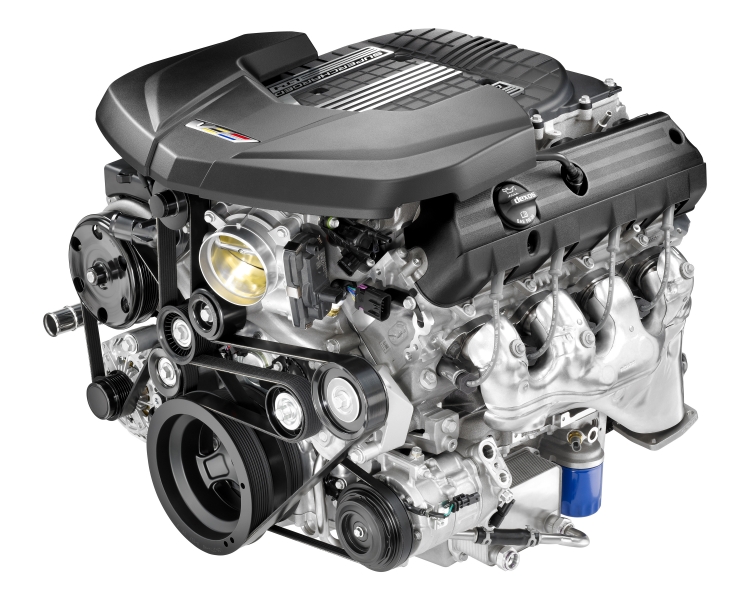ELKHART LAKE, WI – As far as catastrophic engine failures on a race track go, this one lacked any drama until emergency personnel at Road America yelled, “Get out of the car! You’re on fire!”
OK, we may have a situation here after all, I thought, racing to unbuckle from the ’16 Cadillac CTS-V I’d been testing here as part of a media preview of the performance luxury sedan. And once safely behind a Chevy Silverado Heavy Duty the size of an M1 tank, I could indeed see smoke wafting from the engine bay and an expanding pool of engine oil under the car.
However, there was no fire and the crew did not go to the extinguishers. An autopsy of the car the following week showed a piece of plastic was exposed to hot engine oil and melted, causing the smoke and, sadly, pouring water on my plans for years of regaling colleagues with, “Let me tell you about the time I nearly burned up testing a $95,000 Cadillac.”

The story deserves to be told, though, and not as a personal tale of woe but because the engine in question is not of your everyday variety. The 6.2L LT4 small-block supercharged V-8 under the hood of the CTS-V and shared with the Chevy Corvette Z06 is one of epic proportions, boasting 640 hp, 630 lb.-ft. (855 Nm) of torque, a 0-60 mph (97 km/h) time of 3.7 seconds and a top speed of 200 mph (322 km/h).
It’s legendary in powertrain circles, too. The basic small-block design dates back to the 1950s, but today’s range-topping LT4 versions carry cutting-edge technology, such as a compact 1.7L supercharger, gasoline direct injection, cylinder deactivation, heat-resistant aluminum heads and titanium intake valves.
So when an LT4 dies prematurely, it’s newsworthy.
However, you’ll find no mention of it in my review of the car. The engine failure did not affect my overall impressions and, after a bit of back-and-forth with Cadillac Executive Chief Engineer Dave Leone, other LT4 engineers and CTS-V product experts, I’m relatively satisfied the bug that blew the engine will not make it into production units.
But it’s still an interesting turn of events, so here’s what happened.
About six laps into testing the CTS-V and coming out of Road America’s Moraine Straight and into Turn 5, there’s an unusual engine whine. But why not? With the 8-speed automatic transmission, the car was downshifting rapidly into the turn and rpms were high. Besides, what could be wrong with the engine of a flagship performance vehicle from a brand parent General Motors is spending billions on to one day beat BMW and Mercedes. It’s gotta be bulletproof, right?
The LT4 Goes Boom
Not entirely. Two turns later, laying into the throttle for the Hurry Downs straight, there’s a loud thunk from the engine bay. The LT4 sputters and the car decelerates as if it dropped plough.
The car retained power braking and steering, though, so it was a cinch to ease off the track to large cement pad off Turn 8. Testing was still active at this point, so I figured my best bet was to stay inside the CTS-V safely buckled up with my helmet. Then the fire alarm sounded.
Even at that point, I still wasn’t terribly concerned about my safety. GM employs some of the best in the business when comes to testing cars under these conditions. So standing trackside next to the smoking CTS-V, I figured the most painful part of the whole mess would be lunch at the paddock in a few minutes with GM product development chief Mark Reuss, a Nurburgring-certified test driver who helped guide the car to production.

He’s too much of a pro for it to be the least bit awkward, though, and the grilled peach salad was outstanding, by the way.
As it turns out, the culprit wasn’t me but a defective oil bypass valve. Its check valve became dislodged, blocked the flow of cool oil and the engine blew an oil bearing. GM uncovered the problem before the start of regular production and thought the affected units were contained. This one slipped by, Leone tells me. GM since has modified the production process for connecting the male and female ends of the bypass valve.
My sole reservation to this explanation would be that I was given a similar reason behind an engine failure while testing a Chevy Cruze turbodiesel two years ago. A known manufacturing glitch was remedied for production, but the Cruze I drew in the media drive had slipped past, GM told me.
As for the Corvette Z06, GM says that version of the LT4 employs a dry sump so it would not contain the part. The hiccup did not delay the start of CTS-V production on Aug. 10, either, and the cost to GM was negligible.
As for the car itself, it has a new engine now and will continue in its role as an internal vehicle at GM.
The folks at Cadillac admit driving development cars on a race track does not come without uncertainties, but it’s reasonable to host such an event given the thousands of miles and years of development already performed by the product team.
Meanwhile, I’m resting more easily knowing my stupidity didn’t cause the failure. But as CTS-V engineer and accomplished racer John Buttermore joked in the pits at Road America, “You were the last to drive it, so yeah, it’s your fault.”

